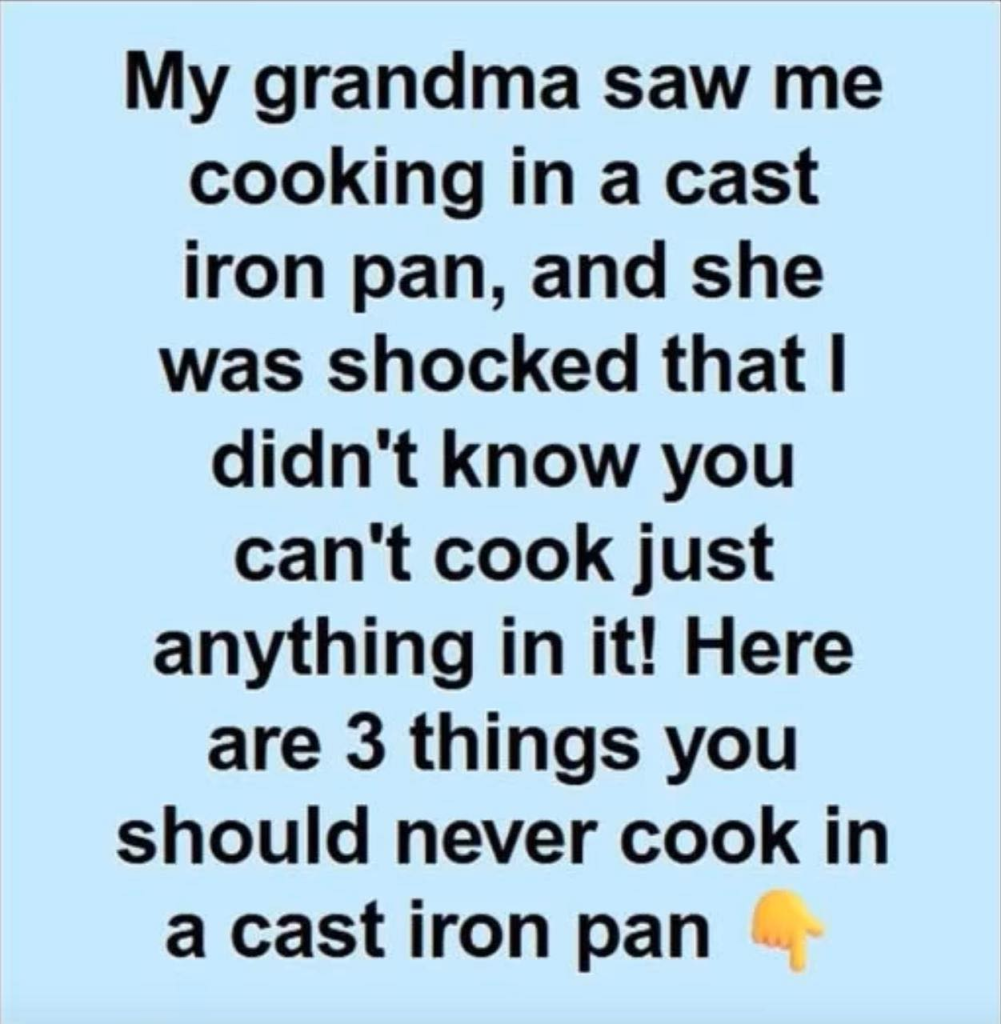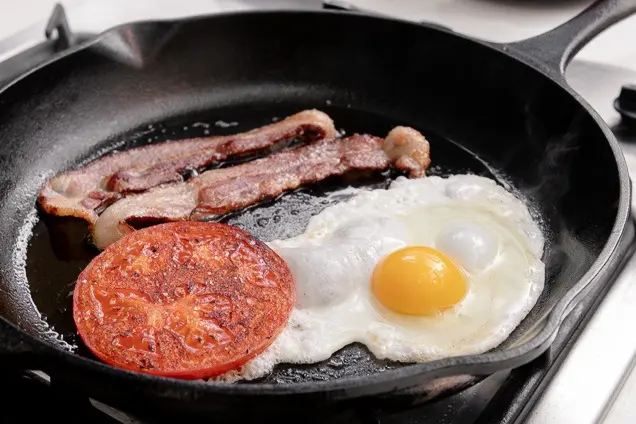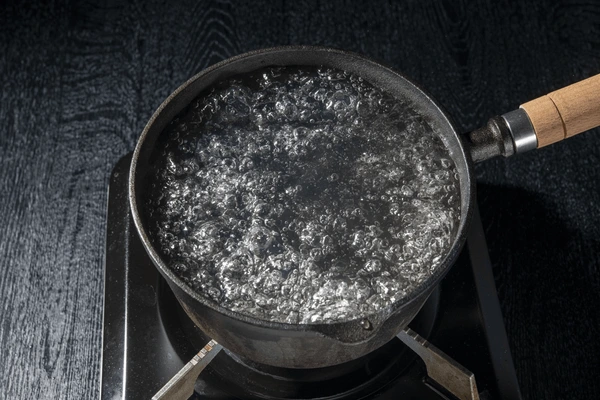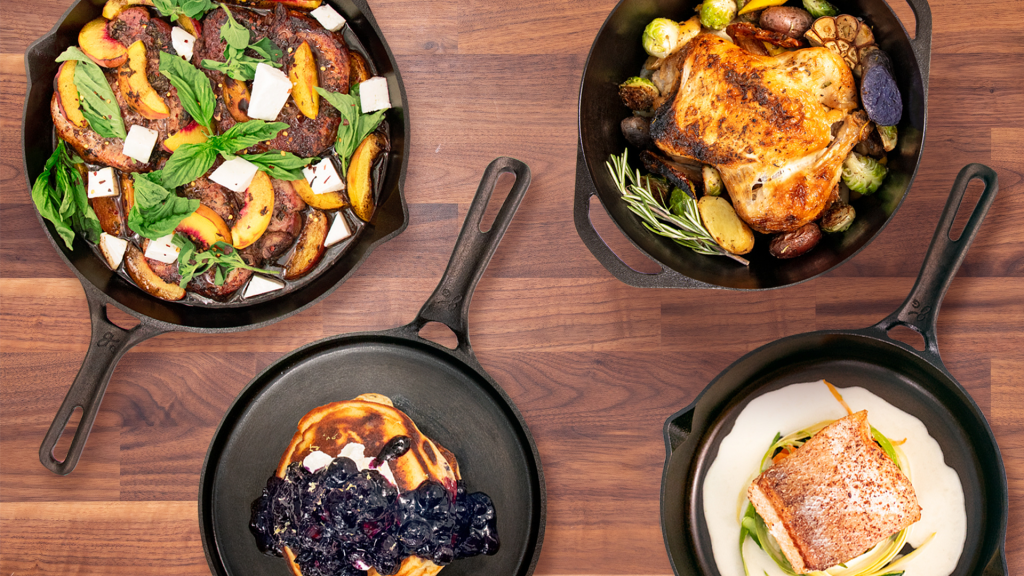Let’s be real—if you own a cast iron skillet, you probably love it like it’s a member of the family. And for good reason. These pans are virtually indestructible, heat like a dream, and turn out some of the crispiest, juiciest meals you’ve ever had. But even superheroes have weaknesses, and cast iron is no different.
As much as we all love the sizzle of bacon or a steak with perfect sear lines, there are certain foods that just don’t play nice with cast iron. In fact, some of them can ruin the seasoning, mess with the flavor, or even shorten the life of your favorite pan.
So, if you want to keep your skillet in top shape, here’s what not to cook in it—and why it matters.

Tomatoes and Other Acidic Ingredients Can Ruin the Seasoning
Tomato sauce might seem harmless, but it’s a sneaky little seasoning destroyer. That’s because tomatoes—and other acidic ingredients like vinegar, wine, and citrus—can break down the nonstick layer you’ve worked so hard to build up.
Worse, if your skillet isn’t perfectly seasoned, acidic foods can even react with the iron, leaving your dish with a weird metallic tang.
Want to whip up a marinara or lemony chicken piccata? Use stainless steel or enameled cast iron instead. Trust me, your pan and your taste buds will thank you.
Video: Never put this in your cast iron!
Delicate Fish Fillets Will Make You Regret Everything
Here’s the deal—cast iron is a champ when it comes to high heat. But that high heat and rough surface don’t exactly play well with flaky, delicate fish like tilapia, cod, or flounder.
You’ll end up with mangled pieces stuck to the pan, a frustrating cleanup, and possibly a faint fishy aroma that lingers into your next batch of pancakes.
Stick to nonstick or stainless steel for fish unless you’re going for blackened salmon and don’t mind the mess.
Sugary Sauces Turn Into a Sticky Situation

Love a good honey garlic glaze? Same. But your cast iron skillet doesn’t.
Sticky sauces tend to burn and cling to the surface, especially if your pan isn’t seasoned like a pro’s. The result? Charred sugar stuck like cement, and a skillet that loses its slick finish fast.
If you’re craving sweet-and-savory, try making the sauce separately or use a nonstick pan designed to handle sugar’s sticky tendencies.
Eggs Can Be a Gamble—Unless You’re a Cast Iron Pro
Ah, eggs. The ultimate cast iron test.
Some folks can glide sunny-side-ups right out of their skillet like butter on a hot biscuit. But for the rest of us? They stick. Badly.
Unless your pan has years of seasoning or you’ve unlocked cast iron’s egg-cooking secrets, stick to nonstick for breakfast. Scraping off stuck egg yolk isn’t just annoying—it can mess with your pan’s surface too.
Strong Flavors Linger Longer Than You’d Think
Video: Things you should NEVER cook in your Cast Iron skillet
Garlic. Curry. Fish sauce. All delicious. But also very clingy when cooked in cast iron.
That’s because cast iron is porous and can absorb strong flavors—especially if the pan isn’t super well-seasoned. It might seem fine until you bake a skillet cookie and find a surprise hint of cumin or shrimp.
If you cook bold, spicy meals often, consider dedicating one skillet to savory dishes and another to sweets. Or clean thoroughly after anything pungent.
Desserts Are Great—Unless You Skipped the Cleaning Step
Cast iron desserts are a thing of beauty. Gooey brownies. Golden peach cobbler. Skillet apple pie.
But here’s the catch: if your last meal was something savory (think onions, bacon, or garlic), those flavors might sneak into your dessert.
Nobody wants their chocolate chip cookie tasting like last night’s stir fry. So either clean your skillet thoroughly or, better yet, keep a dessert-dedicated pan on hand.
Boiling Water Is Not a Good Idea

Thinking of boiling pasta in your cast iron skillet? Just… don’t.
Extended exposure to water can strip away the seasoning and make the skillet more likely to rust. Plus, cast iron isn’t shaped for boiling efficiently, and it takes longer to heat.
Use a stainless steel or enameled pot instead. Cast iron is a dry-heat superstar, not a water warrior.
Don’t Store Leftovers in Your Skillet
We get it—it’s tempting to pop the skillet into the fridge after dinner and call it a day. But storing food in cast iron is a rookie mistake.
Moisture and acidity from the food can slowly eat away at the seasoning and possibly cause rust spots. Plus, your food might absorb a weird metallic taste along the way.
Do yourself a favor—transfer leftovers to a storage container and give your skillet a proper clean and dry before putting it away.
Avoid Thermal Shock: Cold on Hot or Hot on Cold

Let’s talk about thermal shock. That’s what happens when you pour cold water into a screaming hot pan—or put a hot skillet onto a cold countertop. It can warp the metal, or worse, crack the pan.
Cast iron hates sudden temperature changes. Always let it cool naturally, and preheat it slowly to avoid stress fractures.
Quick Tips to Keep Your Cast Iron Happy
- Dry thoroughly after washing—water is the enemy
- Apply a thin coat of oil before storing
- Avoid harsh soaps unless absolutely needed
- Store in a dry, ventilated place
- Re-season when the surface starts to lose its sheen
Conclusion: Cook Smart, and Your Cast Iron Will Thank You
Owning a cast iron skillet is kind of like owning a classic car. It takes a little extra care, a few ground rules, and the occasional polish. But the payoff? Totally worth it.
Knowing what not to cook is just as important as knowing what to cook. So skip the acidic sauces, steer clear of flaky fish, and don’t boil water in it. Treat your skillet right, and it’ll be the most reliable thing in your kitchen—today, tomorrow, and probably fifty years from now.


